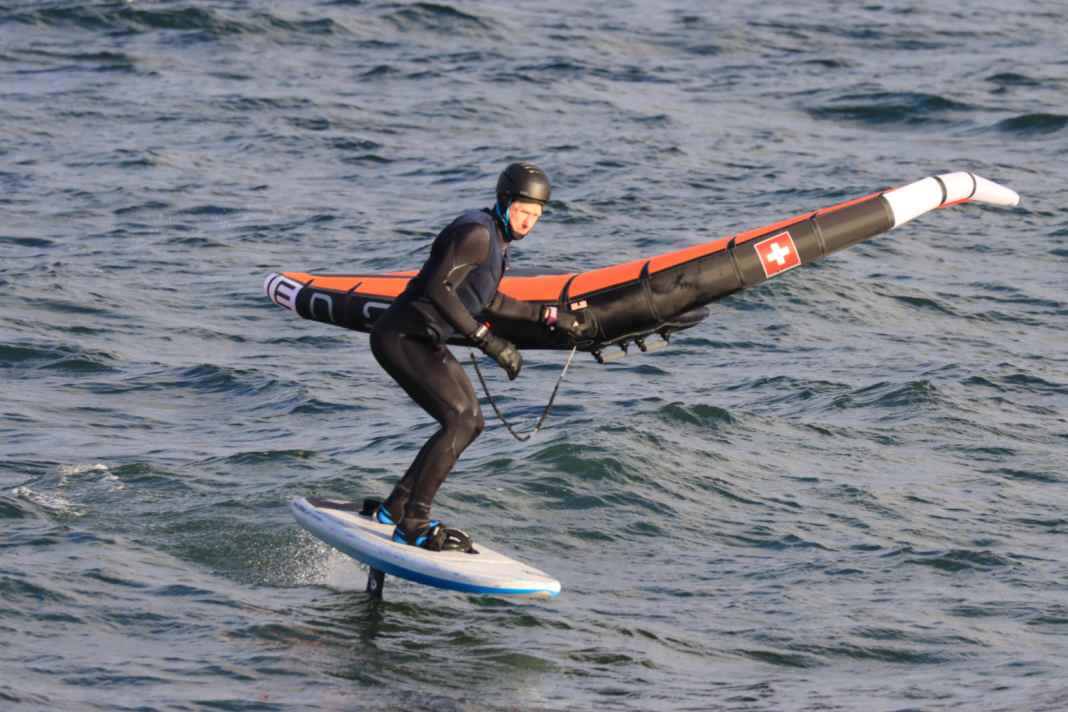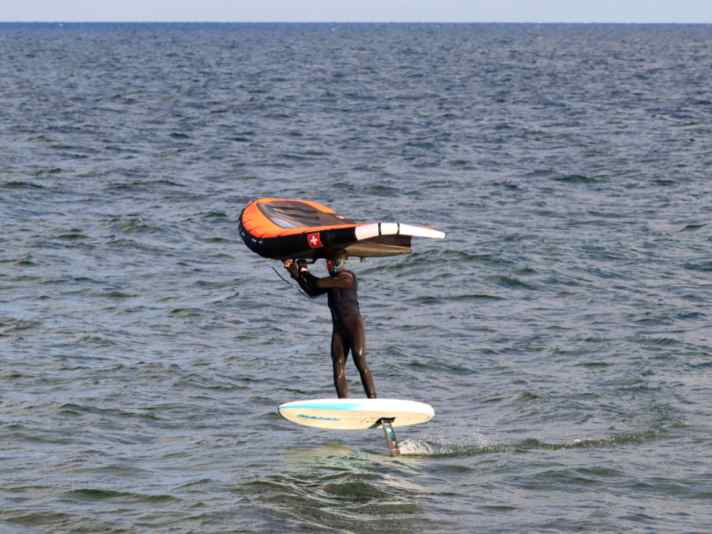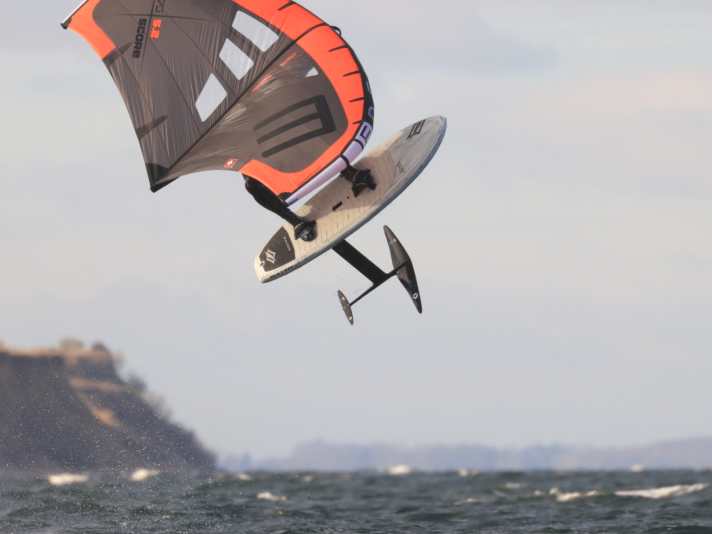





The Naish Hover Downwind Crossover model joins the ranks of mid-length boards that are entering the market in increasing numbers (HERE we tell you what this type of board is all about). We were able to try out the size with a volume of 105 litres. The model can be used for SUP foiling as well as wing foiling.
On land
The mid-length board from Naish is available in a total of four sizes - with a volume of 85/105/125 and 145 litres. Compared to other boards in this class, the Hover Downwind Crossover is quite stretched - the dimensions are smaller than those of the pure downwind model, the Hover Downwindonly slightly shorter and wider. The board is equipped with strap plugs to improve its suitability for wings, but the straps are not included. A grippy and sufficiently large deck pad has been glued to the slightly concave deck. The pronounced bevels are striking; the bevelled edges are designed to gently guide the board back up in the event of unintentional water contact. There is no carrying handle on the underside to minimise drag, but a handle has been installed on the top. The box is quite long and is suitably positioned with regard to the available strap positions.

On the water
With its width of 23 inches (58.4 cm), the model has a typical width for this board class. However, because the mounted foil stabilises the longitudinal axis well when bobbing, the board is not too tippy even under the feet of less experienced foilers. Thanks to its generous length of 6'8'' (203.2 cm), the board is extremely stable around the transverse axis anyway, making it easy to stand up and start off. The old sailing adage "Length runs" The Hover Downwind Crossover gets up to speed excellently and cuts through chop like a hot knife through butter. Getting up to the required take-off speed is therefore easier than average - with a 5.2 wing, our 90-kilo test rider was able to take off at a wind speed of eleven to twelve knots using the appropriate pumping technique. Once lifted off, the handling characteristics are primarily defined by the foil used anyway. Regardless of which wing is used, the stretched board requires a little more experience to stabilise the flight in a straight line and in manoeuvres - more compact and/or wider models offer a small advantage in this respect. It is obvious that mid-length concepts like this are not made for jumping, but normal jumps are certainly possible with straps fitted.

Naish Hover Downwind Crossover - the conclusion
With its stretched outline, the Naish Hover Downwind Crossover takes off exceptionally early and easily - anyone who has early take-off at the top of their wish list should keep a close eye on this board, as the difference in performance compared to pure downwind boards is pleasingly small in this respect. If you are reasonably confident with your standard manoeuvres, you can make full use of the board's advantages for downwinding, in light winds or when freeriding with fast, sporty foils. If you are still learning basic manoeuvres such as tacking and jibing, you will find the Test of the midlength boards other models that are even more good-natured and easier to control.
Very early take-off
No carrying handle at the bottom
-
Naish Hover Downwind Crossover - technical data
- Test model: Naish Hover Downwind Crossover 105
- Length: 6'8'' (203.2 cm)
- Width: 23'' (58.4 cm)
- Weight (own measurement, without straps): 6.80 kilos
- Volume: 105 litres
- Available sizes: 6'4''x85 // 6'8'' x105 // 7'2''x125 // 7'6''x145 litres
- Scope of delivery: Board
- Price: 1749 Euro
